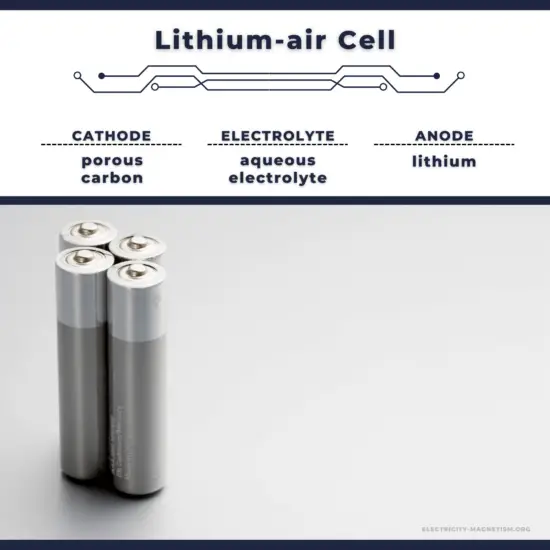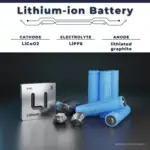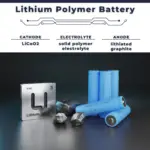Lithium Air Cell

Lithium-based primary cells are batteries that have metallic lithium as an anode. These types of batteries are also referred to as lithium-metal batteries. Note that disposable primary lithium batteries must be distinguished from secondary lithium-ion or lithium-polymer, which are rechargeable batteries. Lithium-ion batteries do not contain metallic lithium.
The lithium-air battery is a metal–air electrochemical cell or battery chemistry that uses oxidation of lithium at the anode and reduction of oxygen at the cathode to induce a current flow.
Similar to zinc-air cells, they have a very high theoretical energy density. The anode, a metallic lithium foil pressed into a nickel mesh current collector, is electrochemically coupled to an unlimited supply of atmospheric oxygen through an air cathode.
Types of Lithium Metal Batteries
The most common cells are summarized below:
- Lithium-Manganese Dioxide Cell. This cell uses lithium foil as the anode and manganese dioxide as the cathode. The electrolyte is a separator sheet impregnated with electrolytic salts. The overall cell voltage is 3 volts. It is the most common non-rechargeable lithium cell commonly used in button cells like CR2032.
- Lithium Iron Disulphide Cell. Cylindrical lithium iron disulfide batteries (LiFeS2) use lithium for the anode, iron disulfide for the cathode, and a lithium salt in an organic solvent blend as the electrolyte. Designed to be a drop-in replacement for Zinc-carbon or alkaline batteries, the cell voltage is 1.5 volts. They are often called “voltage-compatible” lithium cells. They have a higher energy density than the cells they replace and are tailored to high current applications. They are also produced in the AA battery format.
- Lithium Thionyl Chloride Cell. This type of cell has the highest energy density of all lithium-type cells and has a service life of 15 to 20 years.
- Lithium Air Cell. Similar to zinc-air cells, they have a very high theoretical energy density. The anode, a metallic lithium foil pressed into a nickel mesh current collector, is electrochemically coupled to an unlimited supply of atmospheric oxygen through an air cathode.
Disposable primary lithium batteries must be distinguished from secondary lithium-ion or lithium-polymer, which are rechargeable batteries.



